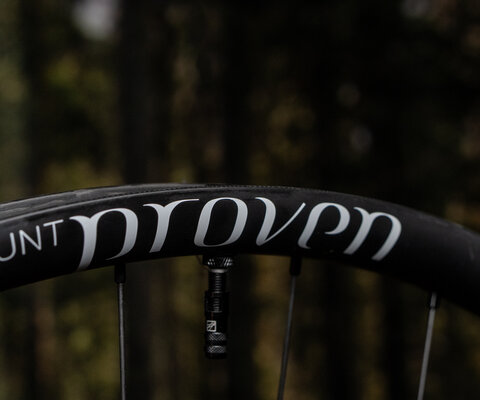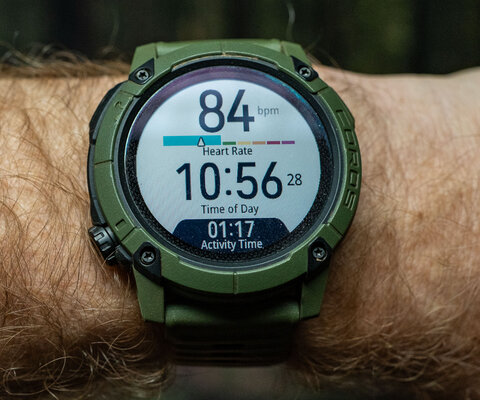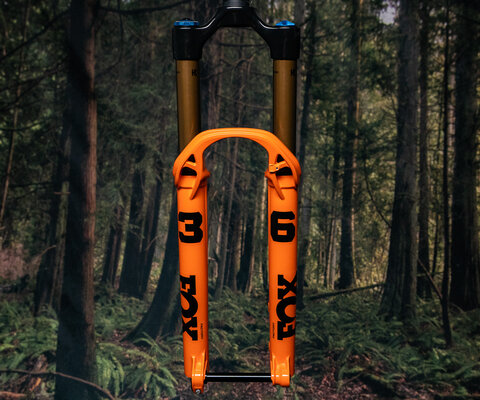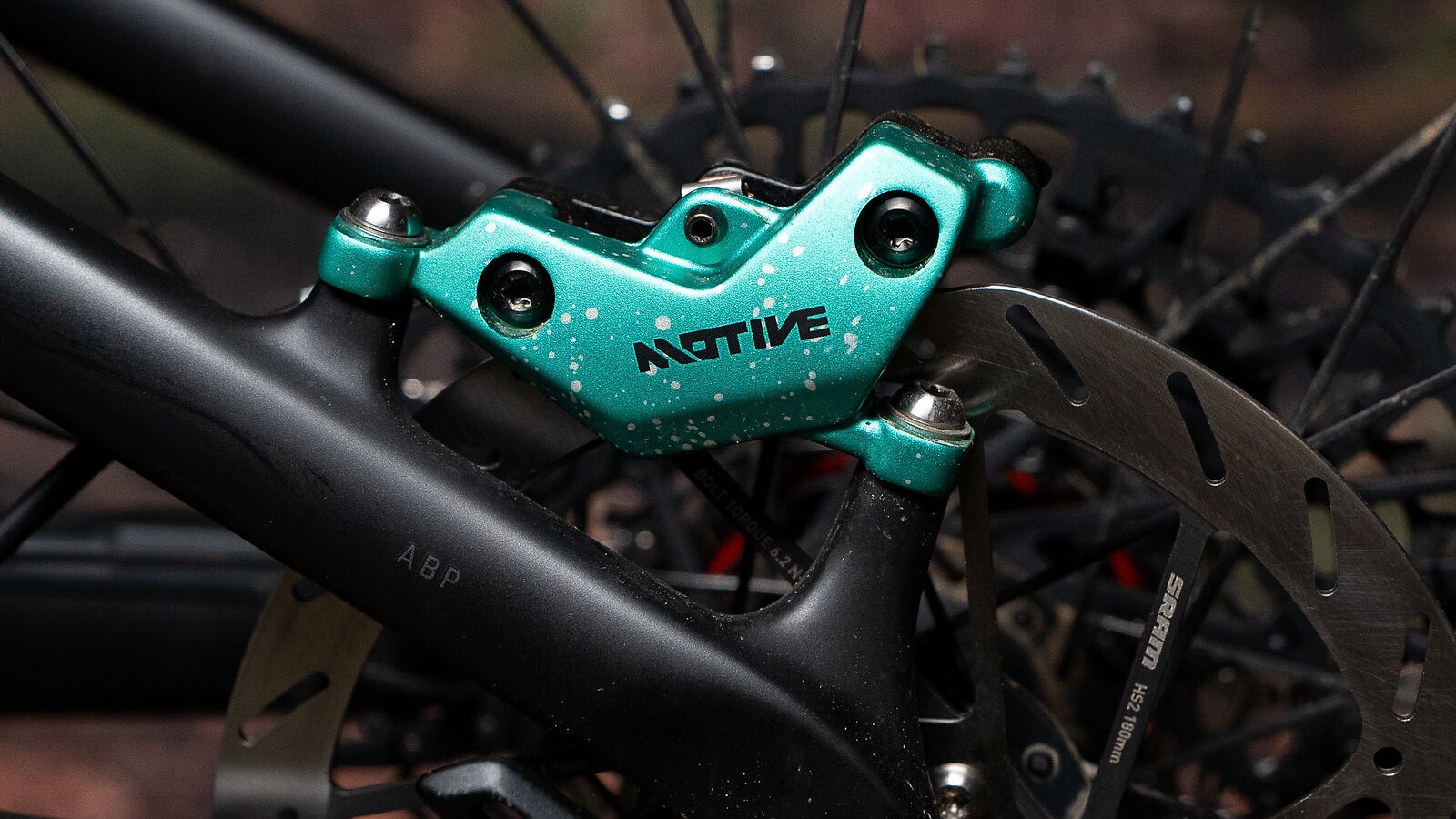
SRAM Motive Brakes Component Review
Words and Photos by Cy Whitling
More power, less weight, all mineral oil.
SRAM has been busy. Along with the new mechanical Transmission which also launched today, the brand is releasing an all-new brake, the Motive, as well as making additions to the existing Maven and DB lines.
The new Motive is a four-piston, mineral oil brake that’s meant to be used on everything from cross-country race whips to 130-millimeter trail bikes. SRAM says that it blends the power of its old Code brakes with the lower weight of the Level line, and effectively replaces both options. I’ve been riding the new Motives for a little over a month now, so we’ll talk about performance, as well as how these changes affect the rest of SRAM’s brake hierarchy.
SRAM Motive Overview
- Pistons: 4
- Stated Weight (front brake, no rotors): 264 g
- Models Available: Ultimate, Silver, Bronze
- Fluid: Maxima Mineral Oil
- MSRP: $599 for the Ultimate Expert kit reviewed here
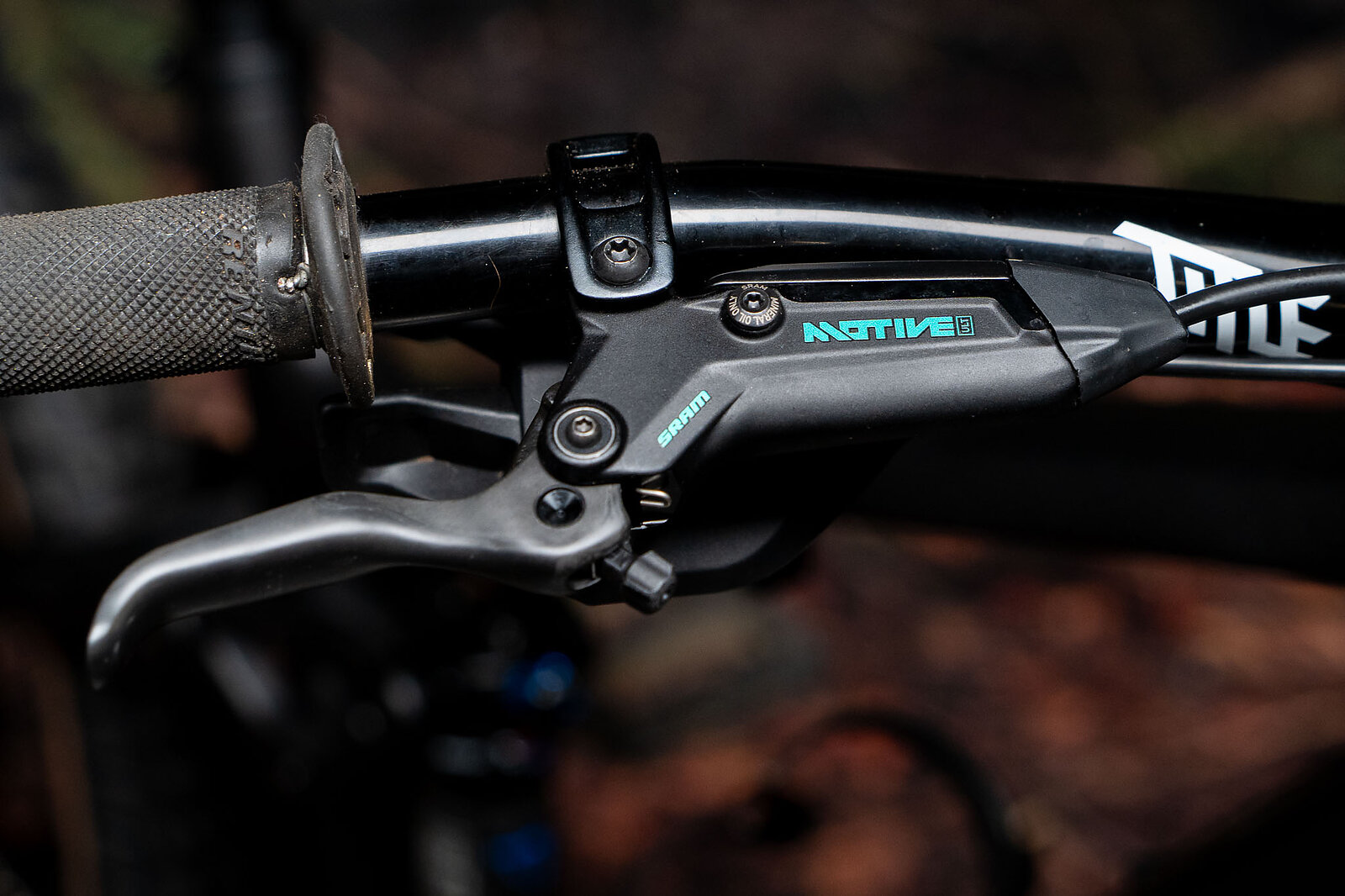
A New Paradigm
Before we zoom in on the nitty gritty of how the new Motive performs, it’s worth looking at how this launch changes the hierarchy of SRAM’s brake offerings. The Motive replaces both the longstanding Code and Level lines, with one brake, available in three trim options. Simultaneously, SRAM is also launching a new Maven Base option, as well as two additions to the DB family, the DB4 and DB6.
The net result? SRAM now offers ten brake SKUs, down from the 27(!) they used to have on tap. Slash the SKU bloat! And every single one of those 10 brakes has four pistons, “Stealth” hose routing, and runs on mineral oil. That’s a big paradigm shift from just a few years ago when the brand was all-in on DOT fluid. Apparently, the success and performance of the DB8 opened the door to more investment in mineral oil brakes, and now just three years after the quiet launch of the DB8, every brake in SRAM’s line uses mineral oil.
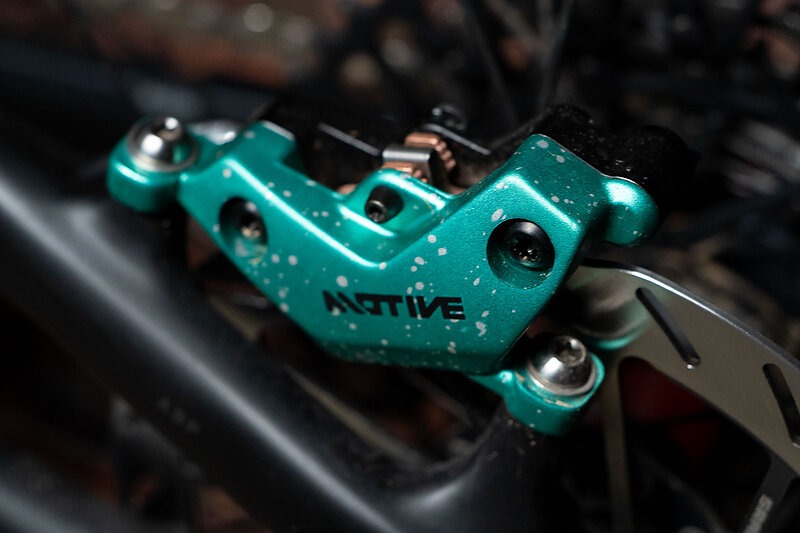
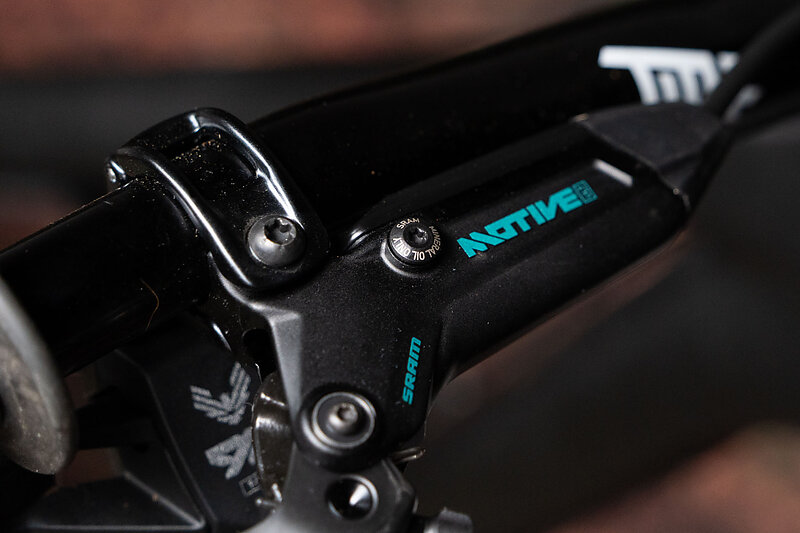
Motive Options
The Motive follows the same Ultimate, Silver, Bronze naming convention as last year’s Maven and at each trim level, the Motive weighs about 100 grams less than a Maven, 45 grams less than a Code, and 20 grams more than the old four-piston Level. The Ultimate Expert Kit (tested here) comes with a set of Motive Ultimates with a custom teal splatter paint job, packaged with a selection of rotors and pads, a rotor bag, a bleed kit, and a multi-tool. Just like the Maven, this package at $599 presents an impressive value over buying each piece individually, and will be available in limited quantities.
The Motive Ultimate comes with titanium hardware and a carbon lever blade, which rotates on a bearing, and costs $275 per brake, without rotors, in a silver anodized package. Bump down to the Motive Silver, and you get stainless steel hardware, an alloy lever mounted on a bearing, and a polished black anodized finish for $225. Those changes weigh all of 9 grams more than the Ultimate. Finally, the Motive Bronze gets a matte black finish, plain steel hardware, and the alloy lever is mounted to a bushing. It also forgoes the banjo hose mount of the more expensive options, weighs 6 grams more than the Silver, and retails for $175.
In the past, SRAM’s brake lines changed more significantly as they tiered down. You’d lose SwingLink when bumping from a Code RS to a Code R for example. That meant that SRAM’s more affordable brakes felt noticeably “worse” than the more premium options. That changed with the Code Stealth, and really stood out with the Maven Bronze. Now, Bronze level brakes deliver the same amount of power, in the same manner, as their Ultimate counterparts. This is a very positive development. The Maven Bronze is excellent, and I’d expect the Motive Bronze to follow in its footsteps.
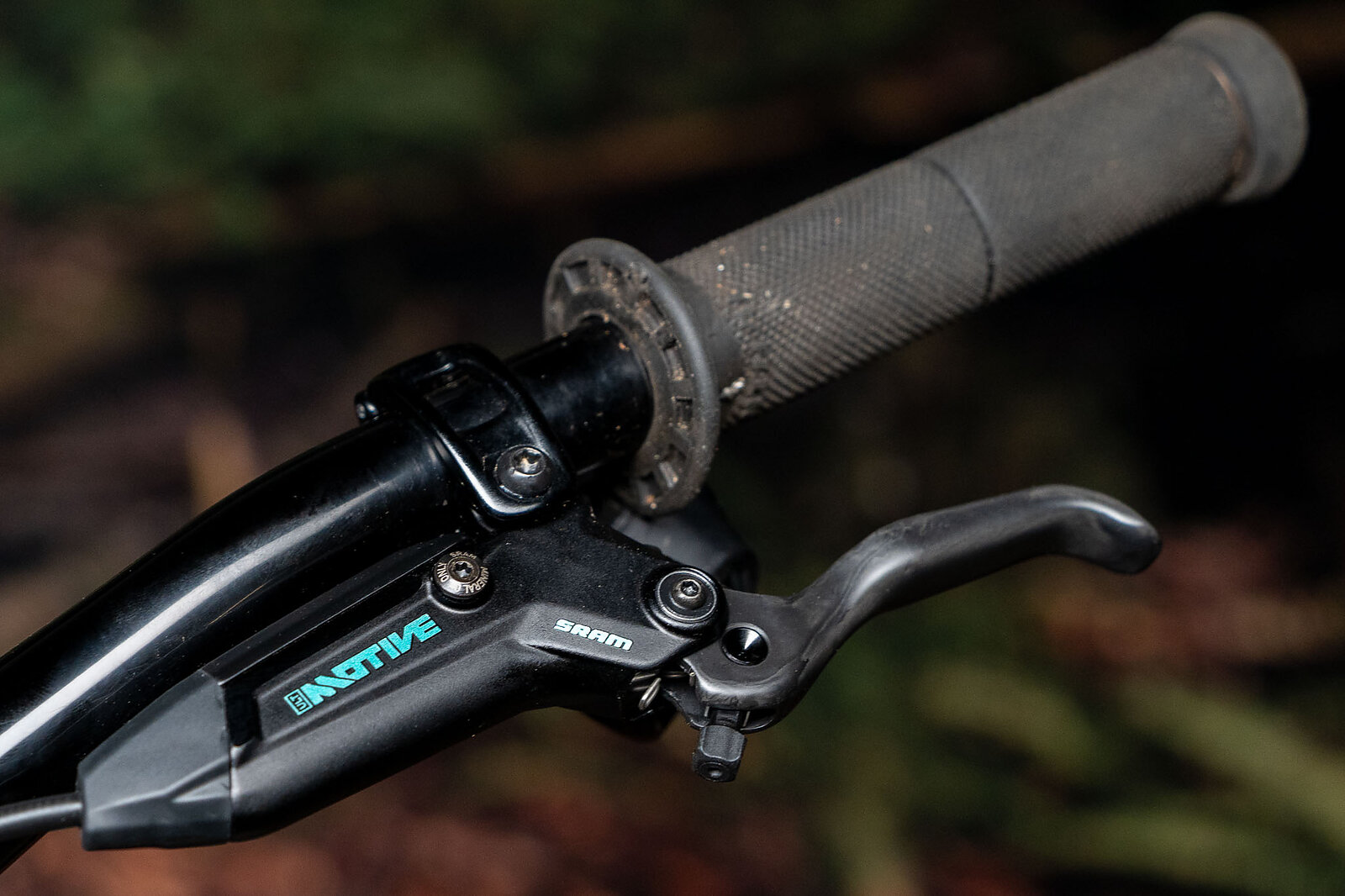
Motive Features
The 2025 SRAM brake mantra is “four pistons, mineral oil, and Stealth routing." The Motive includes all three. Beyond that though, it uses a new lever leverage technology that SRAM calls DirectLink. SRAM’s old lever tech, SwingLink, engaged the pistons progressively, bringing the pads into contact with the rotor, and then allowed for more modulation later in the stroke. According to SRAM, DirectLink is more linear and delivers a more consistent amount of power through the lever stroke. It’s also lighter, which makes sense in a brake like the Motive which will appear on World Cup cross-country bikes.
One ubiquitous SRAM feature that the Motive doesn’t have is any sort of pad contact adjustment. Personally, I’ve cranked the contact adjustment all the way out on every pair of SRAM brakes I’ve ever ridden, and left it there, so I don’t miss this feature. An adjustment doesn’t really count as an adjustment if you only ever use one extreme of its range. This omission saves weight as well.
SRAM says that its mineral oil should last longer between bleeds and maintain more consistent performance than the old DOT options. Just like the Maven, the Motive includes a “Piston Massage” step in the bleed, and just like the Maven, it’s worth doing. That goes for pretty much every hydraulic disk brake though—it turns out that pistons work better when they’re clean and the seals are working.
The Motive uses the same bleed kit, hoses, and Bleeding Edge fittings as the Maven, and is not backwards compatible with DOT bleed kits. It uses the same “Large” brake pads as the Code, and they are available in the same sintered and organic compounds. In sum, the Motive doesn’t really introduce any new standards or small parts into the SRAM ecosystem, and instead builds off of existing products in a satisfying way.
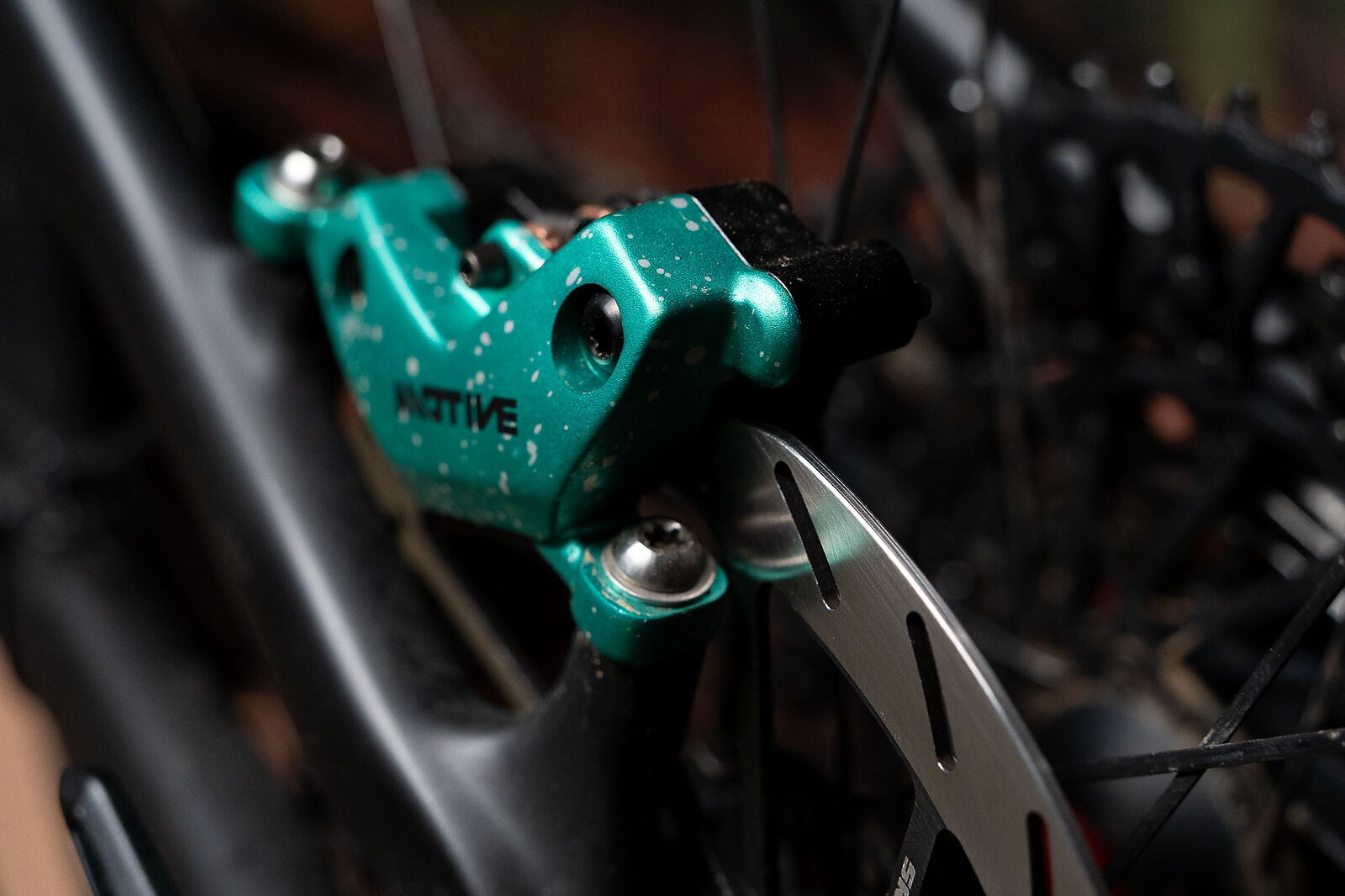
Performance
So, how does the Motive ride? Pretty dang good, it turns out. Up until the release of the Maven, I’ve eschewed SRAM brakes on my personal bikes. I never got along with the Guide or Level’s power delivery, and didn’t love the Code. I prefer a firmer bite and more immediate power delivery than any of those brakes offered. The Motive brings exactly that to the table. It’s easy to control the bike with firm taps, as opposed to the prolonged, panicked drag that I experienced with the Level. And, when you do need to modulate power, I found it easy to find the edge of traction within the lever stroke and manage it.
While the lever feel isn’t the absolute lightest on the market, it’s not fatiguing at all, and I found the Motive to be comfortable and resist overheating on longer descents that are probably outside the purview of its design intentions. No, the Motive does not deliver Maven power. But it does feel like it delivers DB8 or nearly-Code power, in a very easy-to-control fashion. It’s a very intuitive brake, and I’ve been impressed by its combination of power and modulation, as well as how tuneable that is via rotor diameter and width.
All-in, the Motive has been rather “boring"—in a really good way. I don’t think about it, because it’s just doing its job, delivering braking inputs from my hands to my wheels. And while that might sound like faint praise, I’ll reiterate, other than the Maven, I can’t remember the last SRAM brake that felt this intuitive and comfortable to use. I don’t want “exciting” brakes, I want reliable ones, and so far, that’s been the Motive.
The Motive has stayed quiet and rub free, with a solid consistent bite point over the last month, and I’ll check back in and update this review if that changes.
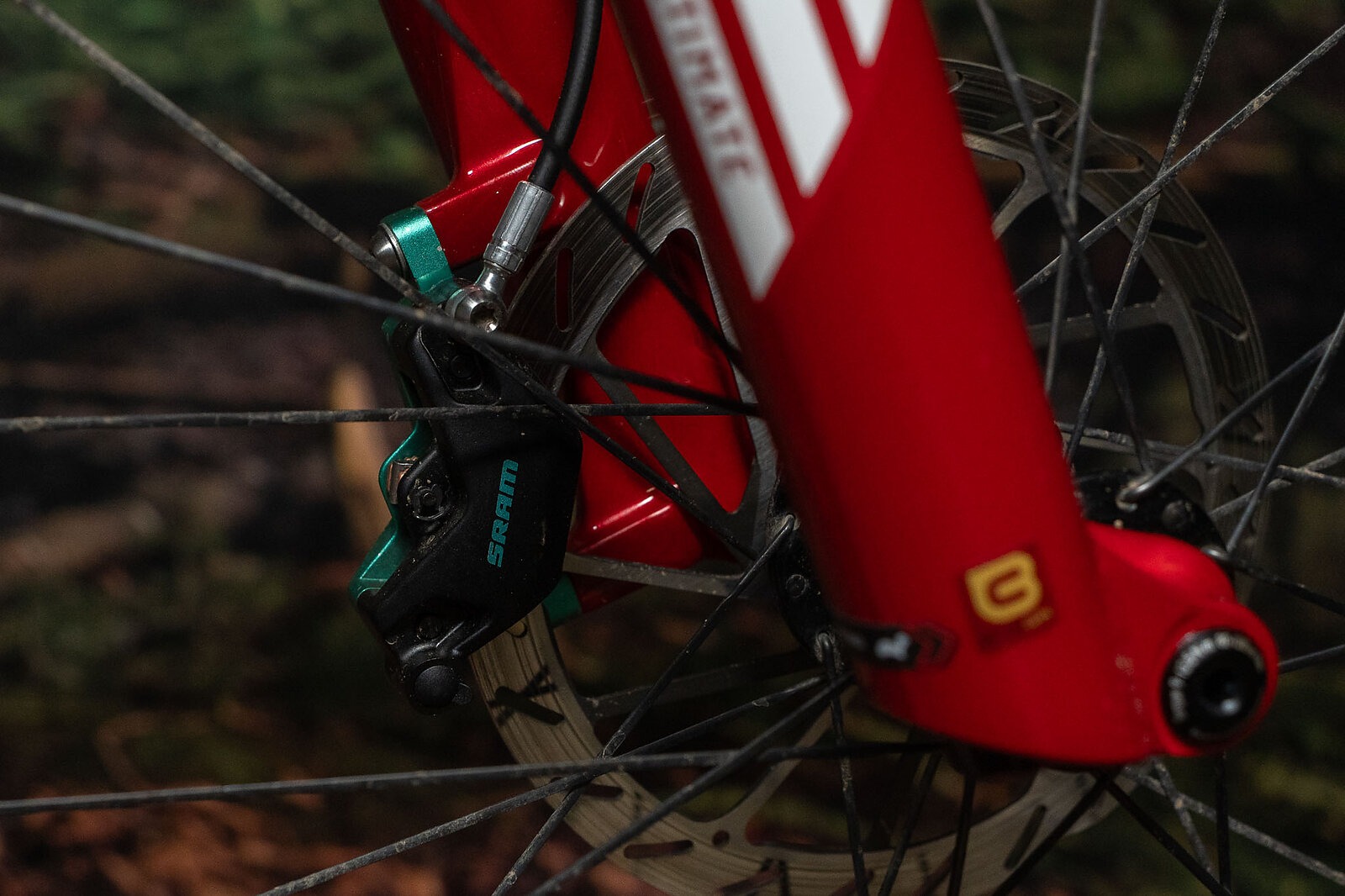
Tuning for Heat Management
When SRAM released the Maven, it included plenty of information about tuning rotor size and thickness for your riding intentions. That’s because brakes have a temperature window for optimal operation. And while we often think about the top end of that window—sizzling rotors, glazed pads, hot fluid leading to terrible lever feel—the low end of that window also matters. Cold brakes are louder and less consistent than warm ones, and hauling around big rotors that take longer to warm up before delivering optimum performance is a waste.
SRAM is continuing that theme with the Motive. Like the Maven, the brand recommends starting with smaller, thinner rotors, and working your way up until you’re getting that perfect bronze tint on the spokes of your rotors. For me, that meant starting with 180-millimeter CenterLine X rotors on both ends of my Trek Top Fuel. Previously, I’ve run 200-millimeter HS2 rotors with Hayes Dominions on the same bike. With the 180-millimeter CenterLine X rotors, I had plenty of power and modulation for the sort of trails the Top Fuel was designed for. That means rolling rides, with a variety of terrain, and prolonged but mellow descents.
However, the problem with the Top Fuel is that it’s really fun to take out of Top Fuel territory and into Slash territory. That means steep, prolonged descents with sketchy runouts and long chutes. In Slash territory, I started to find the edge of my comfort zone as a big, 200-pound dude who takes bad lines on little bikes. So I bumped up to 180-millimeter HS2 rotors front and rear. The slightly thicker rotors handle heat much better, and according to SRAM, deliver 7 percent more power than the CenterLines. They also give the Motive a firmer, more definitive lever feel that I enjoy.
I expected the 180-millimeter HS2 rotors to be a stepping stone before I ultimately ended up back at the 200-millimeter rotors I run on everything short of downhill bikes. However, I’ve been pleasantly surprised, and haven’t had any desire to go bigger yet. These rotors, combined with the Motive, provide plenty of power for any ride up to the “looking for trouble” outings where I’d want to be on a bike with 50 millimeters more rear travel than the Top Fuel anyway.
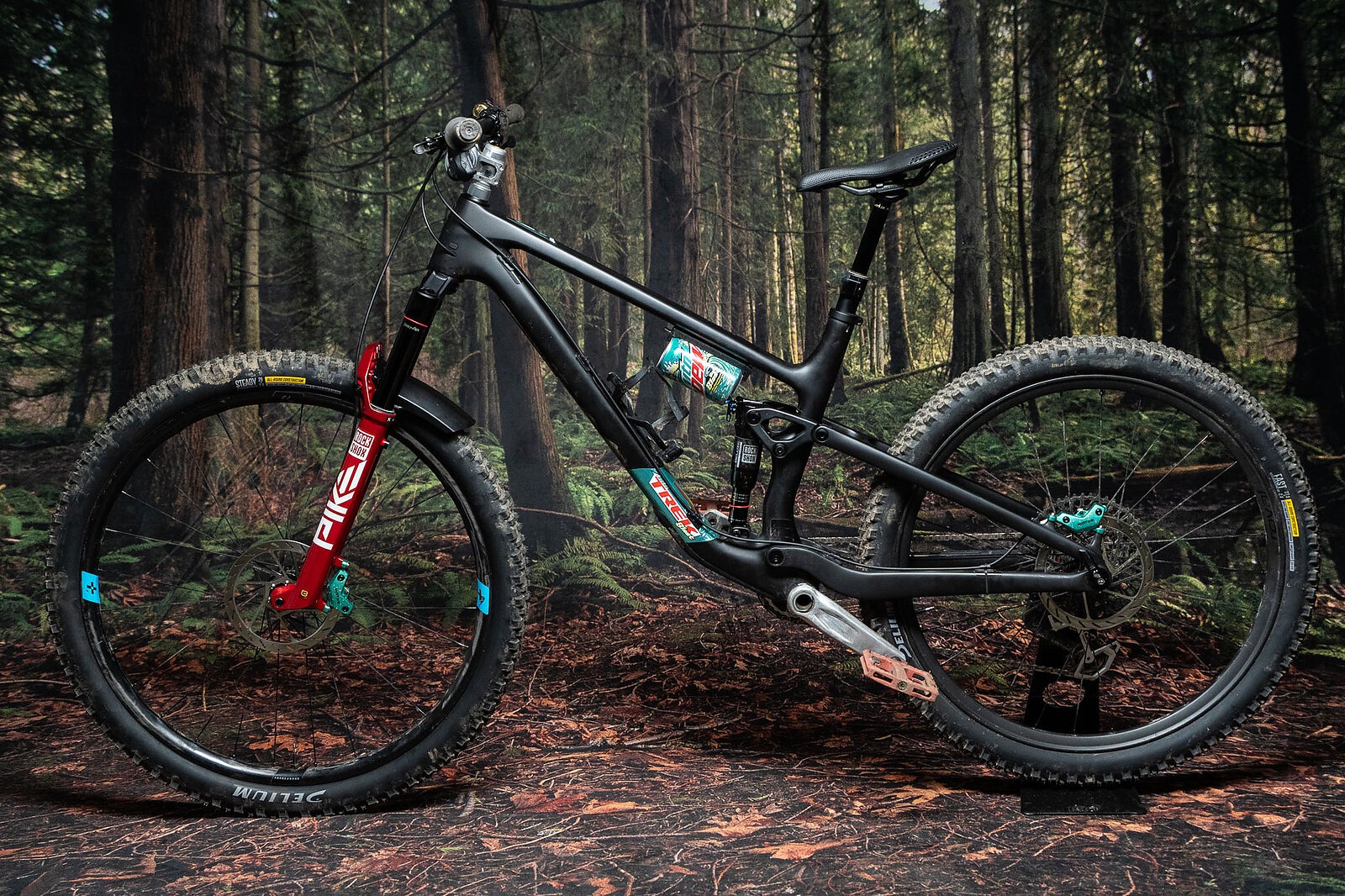
So, What's Motive's Motive?
Historically, SRAM-spec'd bikes have run into a conundrum at the short-travel end of the spectrum. This is well illustrated by the current Specialized Epic Evo and Trek Top Fuel. The Epic Evo comes with Codes, which, until recently, was a full-on World Cup downhill brake. Overkill perhaps? The Top Fuel comes with Levels, which are hilariously underpowered for this versatile chassis. The Motive erases that gap.
SRAM told me to put the Motive on something with 130 or less millimeters of travel in the rear. That’s a nice line to draw. Releases like last year’s Specialized Stumpjumper 15, and Santa Cruz’s Bronson made it clear that Mavens are a great fit for more aggressive, 140-plus millimeter bikes. Draw that line based on your weight, riding style, and available terrain. Light, precise folks in more mellow areas could probably run the Motive on an enduro bike with no issues. On the flip side, until the Motive was released, I would have run the Maven on bikes such as the Top Fuel or, more likely, reached for a non-SRAM option. The Motive fills that “everything short of the Maven” gap really nicely.

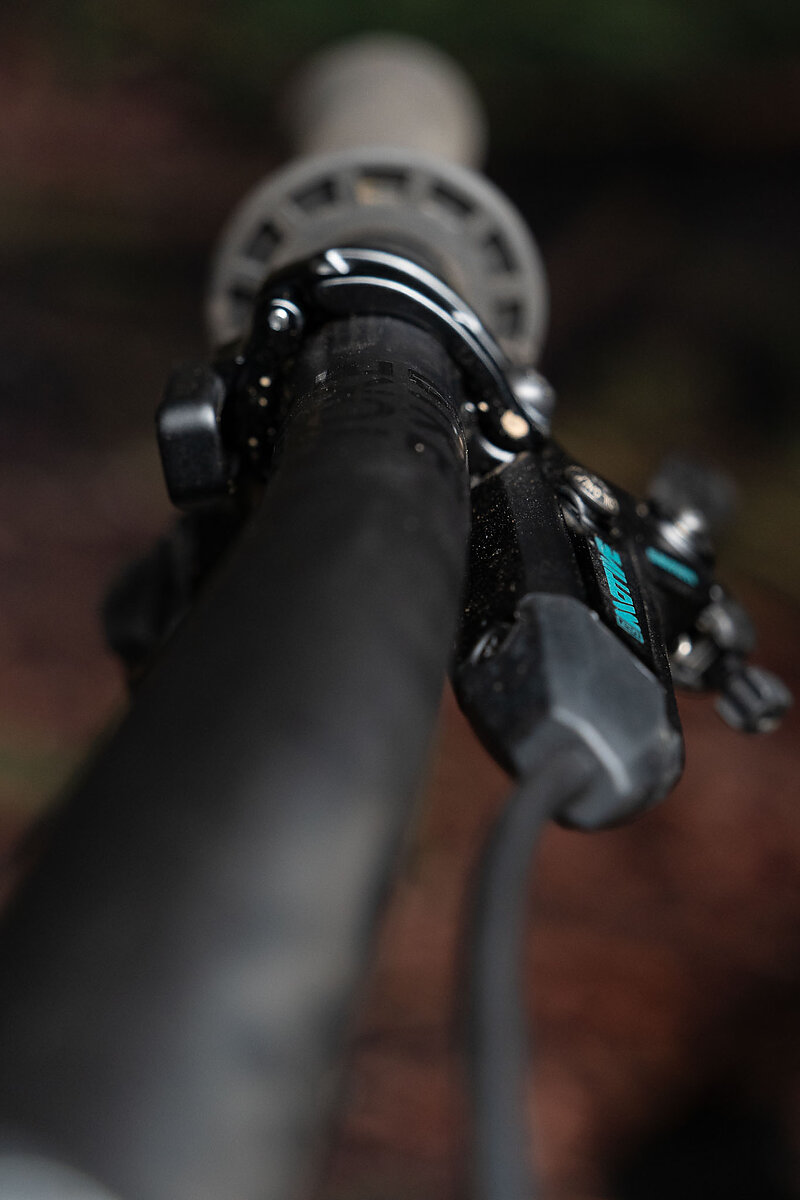
Updates to SRAM’s Brake Line
Along with the Motive, SRAM is also releasing the Maven Base, DB4 and DB6 brakes today. The Maven Base uses slightly smaller pistons than the rest of the Maven family, along with DirectLink instead of SwingLink lever architecture. SRAM says that it has a very similar-feeling power delivery to the rest of the Mavens, but not quite as much total power.
The DB4 and 6 round out SRAM’s more affordable brake line. They both share the same internal architecture as the DB8, but with front and rear-specific levers. The DB6 has MMX-compatible clamps, while the DB4 requires discrete mounting for your dropper and shifter. Expect to see these on more affordable complete builds.
For Now
With the new Motive, SRAM’s brake lineup becomes more cohesive and concise. It’s easier to figure out which brakes make sense for you and your riding. Beyond that though, the Motive is an excellent brake in its own right. It delivers plenty of power, in a controlled fashion, that’s easy to live with. This is the sort of brake that makes complete builds better, and I’m excited to see bikes come spec'd with it.
Learn More: SRAM
